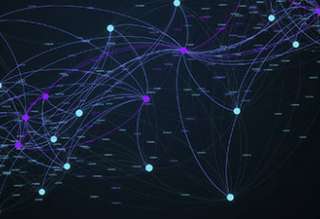- Our Story
- Publications & Resources
- Publications & Resources
- Publications
- IEEE Signal Processing Magazine
- IEEE Journal of Selected Topics in Signal Processing
- IEEE Signal Processing Letters
- IEEE Transactions on Computational Imaging
- IEEE Transactions on Image Processing
- IEEE Transactions on Information Forensics and Security
- IEEE Transactions on Multimedia
- IEEE Transactions on Signal and Information Processing over Networks
- IEEE Transactions on Signal Processing
- IEEE TCI
- IEEE TSIPN
- Data & Challenges
- Submit Manuscript
- Guidelines
- Information for Authors
- Special Issue Deadlines
- Overview Articles
- Top Accessed Articles
- SPS Newsletter
- SigPort
- SPS Resource Center
- Publications FAQ
- Blog
- News
- Dataset Papers
- Conferences & Events
- Community & Involvement
- Professional Development
- For Volunteers
- Information for Authors-OJSP
-
Home
Conferences Events IEEE Signal Processing Magazine IEEE SPL Article IEEE TIFS Article IEEE TMM Article IEEE TSP Article Jobs in Signal Processing Lectures Machine Learning Seasonal Schools Signal Processing News SPM Article SPS Distinguished Lectures SPS Newsletter Article SPS Webinar SPS Webinars SPS Webinar Series Webinar webinars
-
Our Story
What is Signal Processing?

The technology we use, and even rely on, in our everyday lives –computers, radios, video, cell phones – is enabled by signal processing. Learn More » -
Publications & Resources
-
SPS Resources
- Signal Processing Magazine The premier publication of the society.
- SPS Newsletter Monthly updates in Signal Processing
- SPS Resource Center Online library of tutorials, lectures, and presentations.
- SigPort Online repository for reports, papers, and more.
- SPS Feed The latest news, events, and more from the world of Signal Processing.
-
SPS Resources
-
Conferences & Events
-
Community & Involvement
-
Membership
- Join SPS The IEEE Signal Processing Magazine, Conference, Discounts, Awards, Collaborations, and more!
- Chapter Locator Find your local chapter and connect with fellow industry professionals, academics and students
- Women in Signal Processing Networking and engagement opportunities for women across signal processing disciplines
- Students Scholarships, conference discounts, travel grants, SP Cup, VIP Cup, 5-MICC
- Young Professionals Career development opportunities, networking
- Get Involved
-
Technical Committees
- Applied Signal Processing Systems
- Audio and Acoustic Signal Processing
- Bio Imaging and Signal Processing
- Computational Imaging
- Image Video and Multidimensional Signal Processing
- Information Forensics and Security
- Machine Learning for Signal Processing
- Multimedia Signal Processing
- Sensor Array and Multichannel
- Signal Processing for Communication and Networking
- Signal Processing Theory and Methods
- Speech and Language Processing
- Technical Working Groups
- More TC Resources
-
Membership
-
Professional Development
-
Professional Development
- Signal Processing Mentorship Academy (SigMA) Program
- Micro Mentoring Experience Program (MiME)
- Distinguished Lecturer Program
- Distinguished Lecturers
- Distinguished Lecturer Nominations
- Past Lecturers
- Distinguished Industry Speaker Program
- Distinguished Industry Speakers
- Distinguished Industry Speaker Nominations
- Industry Resources
- IEEE Training Materials
- Jobs in Signal Processing: IEEE Job Site
-
Career Resources
- SPS Education Program Educational content in signal processing and related fields.
- Distinguished Lecturer Program Chapters have access to educators and authors in the fields of Signal Processing
- Job Opportunities Signal Processing and Technical Committee specific job opportunities
- Job Submission Form Employers may submit opportunities in the area of Signal Processing.
-
Professional Development
-
For Volunteers
-
For Board & Committee Members
- Board Agenda/Minutes* Agendas, minutes and supporting documentation for Board and Committee Members
- SPS Directory* Directory of volunteers, society and division directory for Board and Committee Members.
- Membership Development Reports* Insight into the Society’s month-over-month and year-over-year growths and declines for Board and Committee Members
-
For Board & Committee Members
Popular Pages
Today's:
- Information for Authors
- IEEE Transactions on Information Forensics and Security
- SPS Scholarship Program
- (ISBI 2026) 2026 IEEE 23rd International Symposium on Biomedical Imaging
- Unified EDICS
- IEEE Transactions on Multimedia
- IEEE Transactions on Image Processing
- Information for Authors-SPL
- (ASRU 2025) 2025 IEEE Automatic Speech Recognition and Understanding Workshop
- Submit a Manuscript
- IEEE Signal Processing Letters
- Awards & Submit Award Nomination
- Conference Call for Papers
- IEEE Journal of Selected Topics in Signal Processing
- Access Restricted
All time:
- Information for Authors
- Submit a Manuscript
- IEEE Transactions on Image Processing
- IEEE Transactions on Information Forensics and Security
- IEEE Transactions on Multimedia
- IEEE Transactions on Audio, Speech and Language Processing
- IEEE Signal Processing Letters
- IEEE Transactions on Signal Processing
- Conferences & Events
- IEEE Journal of Selected Topics in Signal Processing
- Information for Authors-SPL
- Conference Call for Papers
- Signal Processing 101
- IEEE Signal Processing Magazine
- Guidelines
Last viewed:
- Submit a Manuscript
- IEEE JSTSP Special Issue on High-Dimensional Imaging: Emerging Challenges and Advances in Reconstruction and Restoration
- Steering Committee
- Multimedia Prize Paper Award
- LININ: Logic Integrated Neural Inference Network for Explanatory Visual Question Answering
- JPEG Image Encryption With DC Rotation and Undivided RSV-Based AC Group Permutation
- JPEG Image Encryption With DC Rotation and Undivided RSV-Based AC Group Permutation
- HNR-ISC: Hybrid Neural Representation for Image Set Compression
- Editorial Board
- Call for Proposals: (SAM 2026) 2026 IEEE Sensor Array and Multichannel Signal Processing Workshop
- Content-Aware Tunable Selective Encryption for HEVC Using Sine-Modular Chaotification Model
- Online Resources
- 2024 IEEE Signal Processing Society Awards Presented in India!
- Members and Associate Members
- Links
Top Reasons to Join SPS Today!
1. IEEE Signal Processing Magazine
2. Signal Processing Digital Library*
3. Inside Signal Processing Newsletter
4. SPS Resource Center
5. Career advancement & recognition
6. Discounts on conferences and publications
7. Professional networking
8. Communities for students, young professionals, and women
9. Volunteer opportunities
10. Coming soon! PDH/CEU credits
Click here to learn more.
The Latest News, Articles, and Events in Signal Processing
The IEEE Signal Processing Society (SPS) invites nominations for the position of Editor-in-Chief for the following journals: IEEE Journal of Selected Topics in Signal Processing, IEEE/ACM Transactions on Audio, Speech, and Language Processing, IEEE Transactions on Computational Imaging, IEEE Transactions on Information Forensics and Security, and IEEE Transactions on Signal and Information Processing over Networks for a 3-year term starting 1 January 2022.
Each year, the IEEE Board of Directors confers the grade of Fellow on up to one-tenth of one percent of the voting members. To qualify for consideration, an individual must have been a Member, normally for five years or more, and a Senior Member at the time for nomination to Fellow.
Did you know the Society offers funding under the Member Driven Initiatives program for events that encourage involvement by SPS membership, including local chapters, universities, industry members as well as individual members?
This IEEE Signal Processing Society (SPS) Chapter Certification program is now accepting applications for review in 2021. This is open to all Chapters who are not currently certified, or whose certification will end on 31 December 2021.
Signal sampling and reconstruction is a fundamental engineering task at the heart of signal processing. The celebrated Shannon-Nyquist theorem guarantees perfect signal reconstruction from uniform samples, obtained at a rate twice the maximum frequency present in the signal.
IEEE SPS has built a streamlined mechanism for employers to add a job announcement by simply filling in a simple job opportunity submission Web form related to a particular TC field. To submit job announcements for a particular Technical Committee, the submission form can be found by visiting the page below and selecting a particular TC.
The Signal Processing Society (SPS) has 12 Technical Committee that support a broad selection of signal processing-related activities defined by the scope of the Society.
Nominations are due 15 January annually for the IEEE Technical Field Awards (TFAs). Download nomination forms and award-specific criteria.
The IEEE Signal Processing Society Delhi Chapter has been selected as the recipient of the 2020 Chapter of the Year Award! The Chapter of the Year Award will be presented at the ICASSP 2021 Awards Ceremony in Toronto, Canada.
Dr. Behnaz Ghoraani is an Associate Professor and the founder and director of the Biomedical Signal and Image Analysis lab at the Department of Computer & Electrical Engineering at Florida Atlantic University (FAU). Before joining FAU, she was an Assistant Professor at the Department of Biomedical Engineering at Rochester Institute of Technology (2012-2016).
This issue brings to you our interview with Dr. Abhishek Mahesh Appaji, an active IEEE Signal Processing Society (SPS) Young Professional. I am working as an Institutional Coordinator for R&D and Assistant Professor at B.M.S. College of Engineering, Bengaluru, India. I obtained my Bachelor of Engineering in Medical Electronics with University Rank from BMSCE, and a Masters of Engineering (M.E) in Bioinformatics from University Visvesvaraya College of Engineering, Bangalore.
Yashwant Gupta is a Professor and Centre Director at the National Centre for Radio Astrophysics (NCRA), Pune, India. NCRA is one of the national centres of the Tata Institute of Fundamental Research (TIFR). Prof. Gupta’s research interests are in the broad area of radio astronomy, which special emphasis on the studies of pulsars...

Autonomous Vehicles at the Intersection of Computer Vision, Machine Learning and Human Factors
About the project
The space of good ideas may be finite, while the names we give these ideas are infinite. There are many examples of redundant nomenclature.

Who we are looking for:
An experienced signal processing engineer who is creative, innovative, thrives on technical challenges, and is comfortable merging concepts from different technical disciplines.
Experience (required):
• 5 years of signal processing experience (analysis, modification, and synthesis)
• strong background emphasizing and detecting components in signals
• strong data analysis/data science abilities
• strong programming abilities
EEE Signal Processing Society Vice President-Education Shrikanth (Shri) S. Narayanan invites nominations for the positions of Chief Editor, Signal Processing Repository (SigPort) and Chief Editor, Resource Center for a 3-year term starting 1 January 2022. Nominations must be received no later than 5 April 2021.

The Signal Acquisition, Modeling, Processing and Learning (SAMPL) lab headed by Prof. Yonina Eldar at the Weizmann Institute of Science is recruiting PhD, MSc and post-doctoral students for cutting-edge research applying signal processing and machine learning for communication and radar systems.
Candidates with strong algorithmic background are invited to send their CV and 3 recommendations.

OPTIMA group (https://optima.meduniwien.ac.at) is seeking an exceptionally motivated postdoc to strengthen our interdisciplinary team working on deep learning for medical image analysis. As part of our new initiative on Artificial Intelligence in Retina you will be leading exciting projects, at the interface of computer science and medicine.
June 29 - July 2, 2021
Location: Bristol, UK
Pages
SPS Social Media
- IEEE SPS Facebook Page https://www.facebook.com/ieeeSPS
- IEEE SPS X Page https://x.com/IEEEsps
- IEEE SPS Instagram Page https://www.instagram.com/ieeesps/?hl=en
- IEEE SPS LinkedIn Page https://www.linkedin.com/company/ieeesps/
- IEEE SPS YouTube Channel https://www.youtube.com/ieeeSPS
Home | Sitemap | Contact | Accessibility | Nondiscrimination Policy | IEEE Ethics Reporting | IEEE Privacy Policy | Terms | Feedback
© Copyright 2025 IEEE - All rights reserved. Use of this website signifies your agreement to the IEEE Terms and Conditions.
A public charity, IEEE is the world's largest technical professional organization dedicated to advancing technology for the benefit of humanity.




















